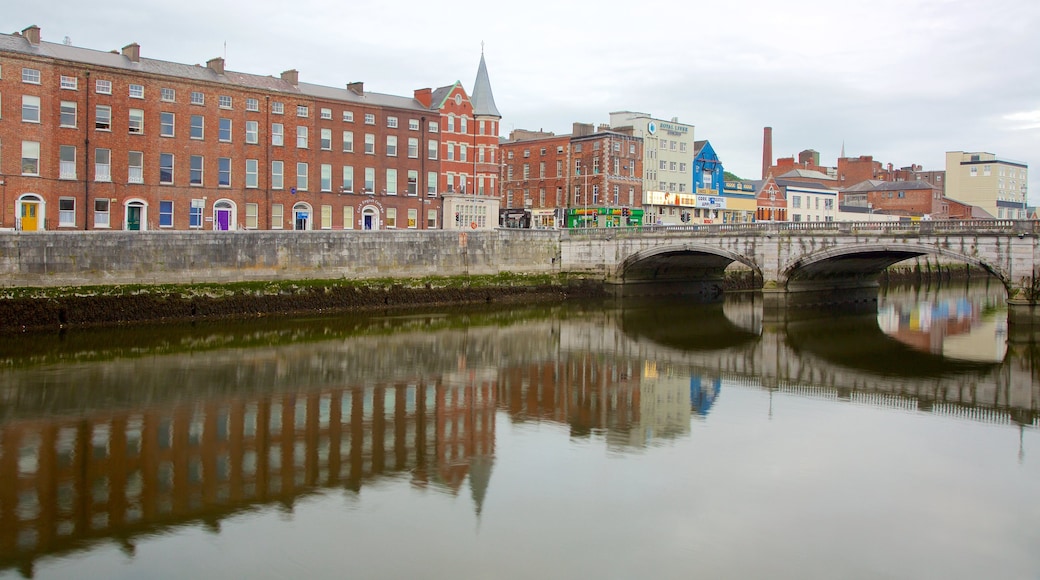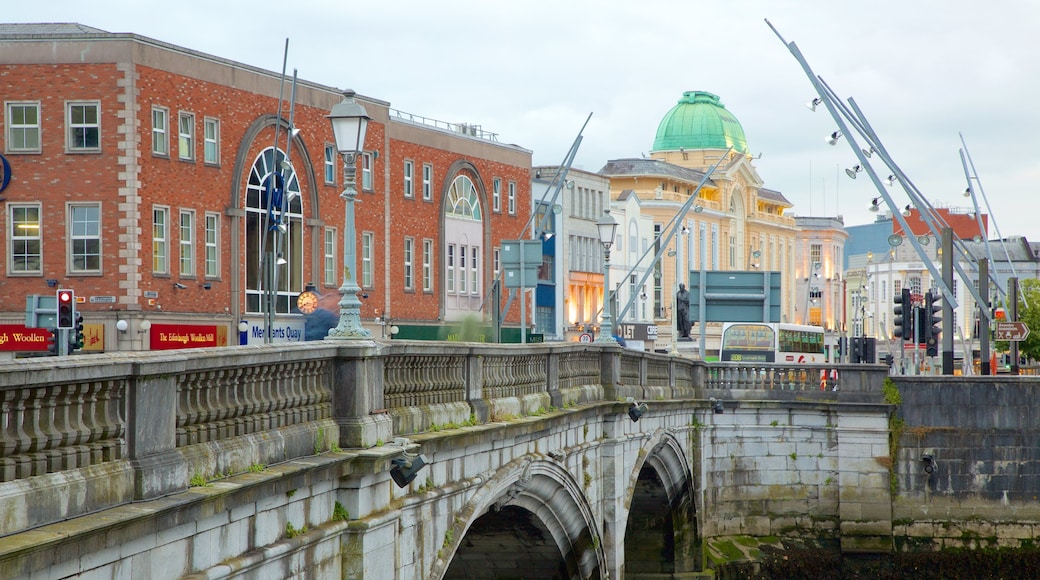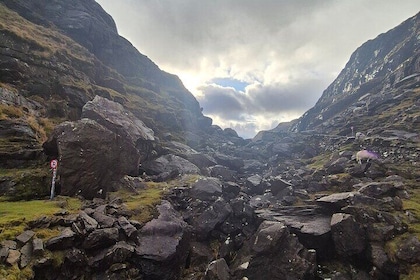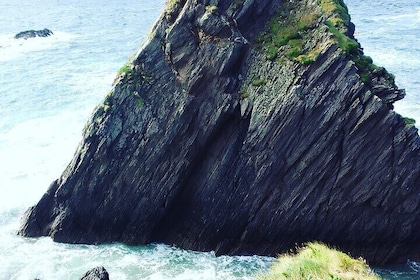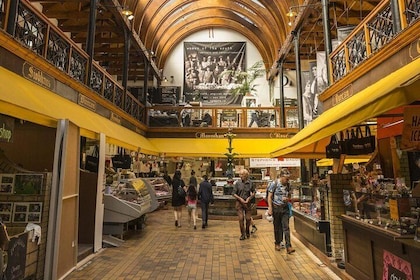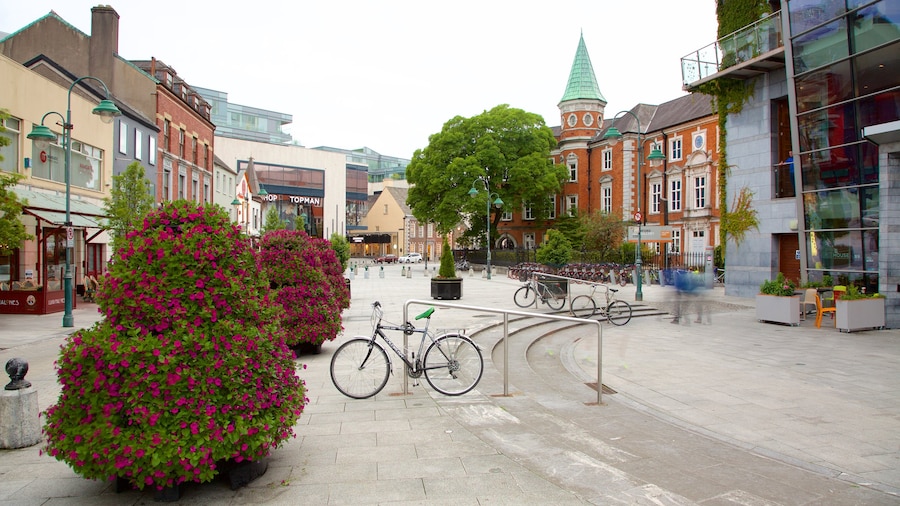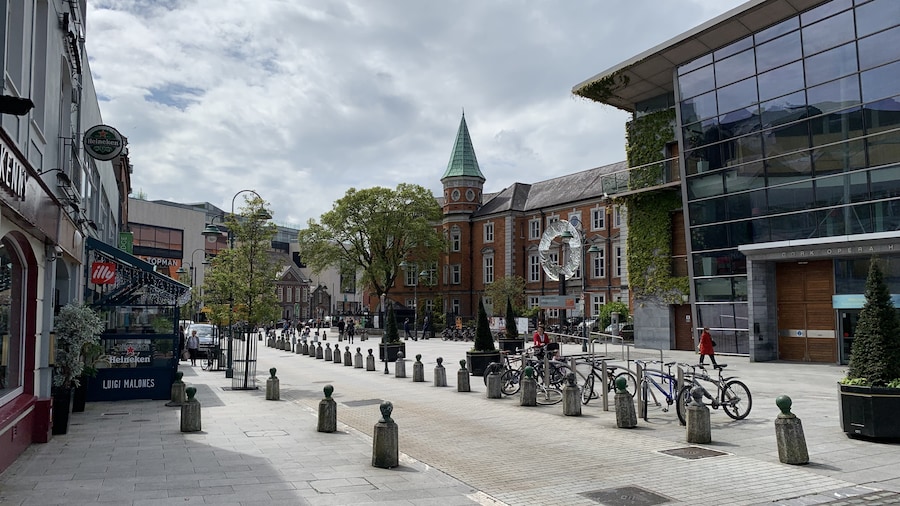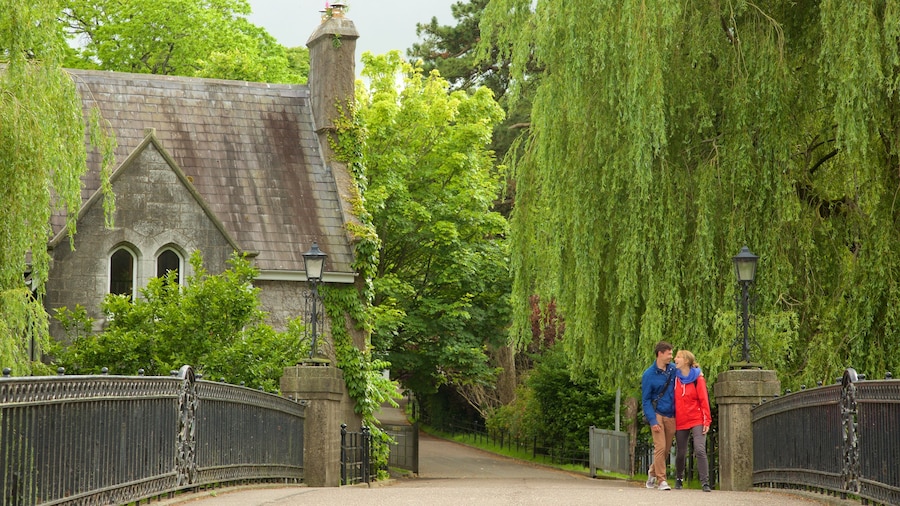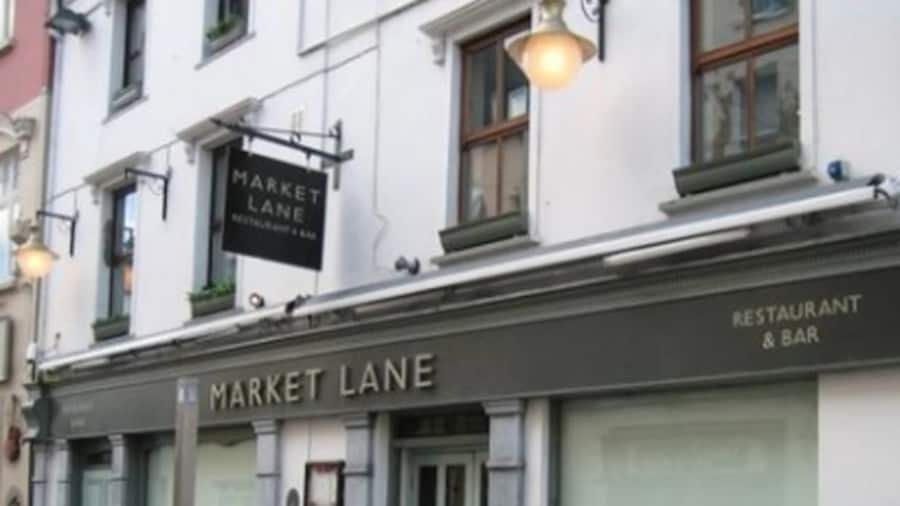Take in views of the River Lee from this 18th-century bridge and wander through Cork’s city center via one of the city’s most historic streets.
Visit St. Patrick’s Bridge, a centuries-old structure spanning the River Lee. It has played a key role in Cork’s trading heritage. First opened in 1789 but destroyed by flooding that year and again in 1853, the 167-foot-long (51-meter) bridge reopened in 1859. The idea behind St. Patrick’s Bridge was to provide the butter merchants with a convenient link from the north side of the river to the docks and warehouses of the city center.
Today, the bridge is a recognizable city landmark and a great vantage point for views along the river. Stand in the middle of the bridge and spot the old merchant houses lining the riverbanks. Imagine a time when horse-drawn carriages and trams transported traders between the city’s northern and southern districts.
Go to either end of the bridge and gaze down at its three arches. Look for the carved effigies above each arch, which depict the sea god Neptune, St. Bridget and St. Patrick. Originally, the bridge featured a portcullis, incorporated to control the flow of maritime traffic beneath it. This was removed in 1824.
The southern end of the bridge converges with St. Patrick’s Street, a lively commercial thoroughfare known locally as Pana. Once a river channel framed by quays, it became an elegant street around 1780. Check out J.H. Foley’s statue of Theobald Mathew, a Catholic reformer who campaigned for abstinence from alcohol. Follow the curving street as it passes grand mansions and colorful townhouses, many of which house bars, cafés and shops.
Take a detour on Carey’s Lane and French Church Street, which is the heart of Cork’s Huguenot Quarter. Admire the Gothic-style architecture of the St. Peter and St. Paul’s Church.
Located just a short walk from Cork’s city center, St. Patrick’s Bridge is close to several other major city attractions. Visit the nearby Cork Opera House and Crawford Art Gallery.
